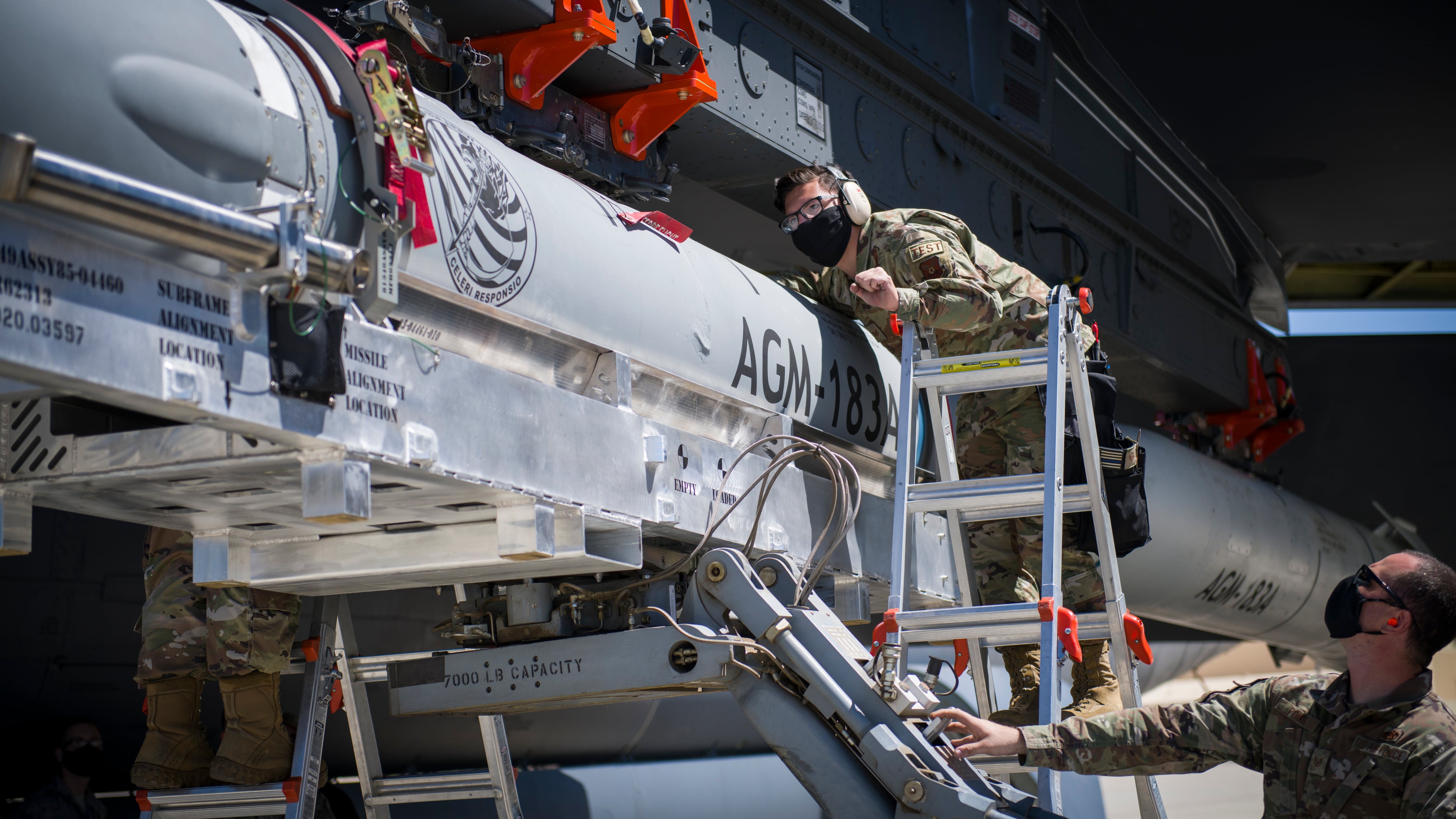WASHINGTON — The White House’s recent decision to invoke Defense Production Act authorities to mobilize the hypersonics-industrial base will “accelerate” the transition from development to production of high-speed systems, Pentagon officials told lawmakers Friday.
The Biden administration last week authorized the use of DPA Title III authorities to “rebuild and expand the nation’s domestic hypersonics industrial base.” The authorities allow the government to establish incentives for companies to increase production capacity or quality within critical technology areas that the president deems critical to national defense.
Hypersonic vehicles can travel and maneuver at or above Mach 5, and the Defense Department plans to spend close to $25 billion over the next five years to develop, test and field these systems. In a March 3 statement, Pentagon officials said they plan to use DPA authorities to “strategically accelerate” programs that are transitioning from the prototype to the operational phase by investing in advanced manufacturing technologies for hypersonic engines and guidance systems.
During a March 10 hearing with the House Armed Services Committee’s strategic forces panel, Rep. Donald Norcross, D-N.J., noted that the DPA is typically invoked when industry is unequipped to meet demand for a high-need capability. For example, during the height of the COVID-19 pandemic, the Defense Department relied on DPA Title III authorities to shore up struggling supply chains.
In the case of hypersonic capability development, Norcross said it’s unclear why the authorities are needed.
“Where is industry not answering the call?” he asked defense officials.
Michael White, the Pentagon’s principal director for hypersonics, said he thinks industry “can step up” to meet the department’s needs as it transitions technology from labs and test facilities to production floors. DPA authorities, he explained, allow the DoD to incentivize companies to move faster.
“The real purpose for that presidential determination for hypersonics is to accelerate the pace at which industry can respond to our supply chain needs,” he said. “As we move out of the laboratory environment and into a production environment, we have to make sure we’re pulling in even nontraditional and commercial-based industry practices and procedures to deliver affordable capacity moving forward.”
White noted that the Pentagon recently completed a report, directed by the fiscal 2023 National Defense Authorization Act, that outlines its work to improve collaboration among the military services as well as with industry and academia on hypersonic testing and development.
The report, which was due in February, should be submitted within the next month, he said.
Courtney Albon is C4ISRNET’s space and emerging technology reporter. She has covered the U.S. military since 2012, with a focus on the Air Force and Space Force. She has reported on some of the Defense Department’s most significant acquisition, budget and policy challenges.







